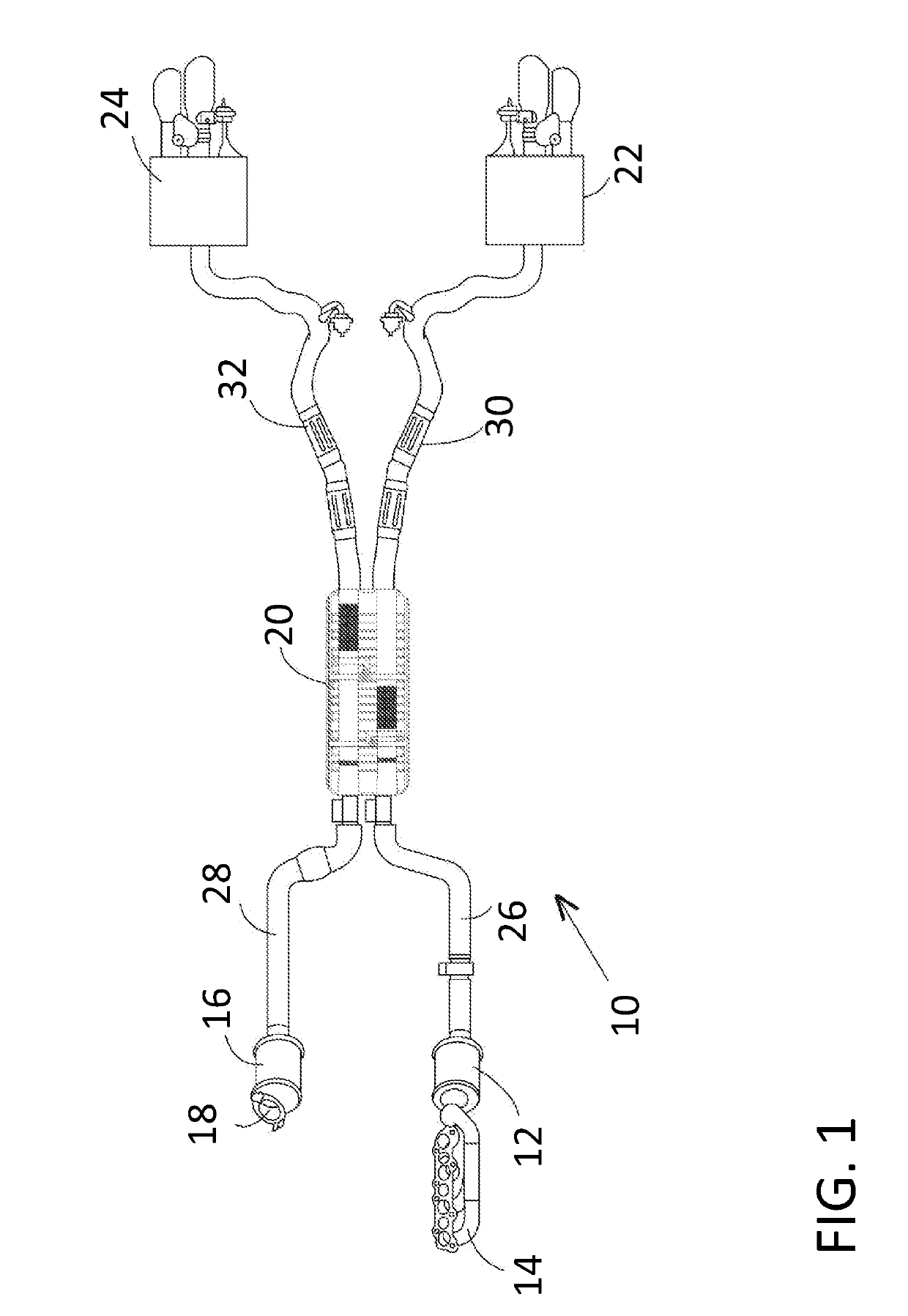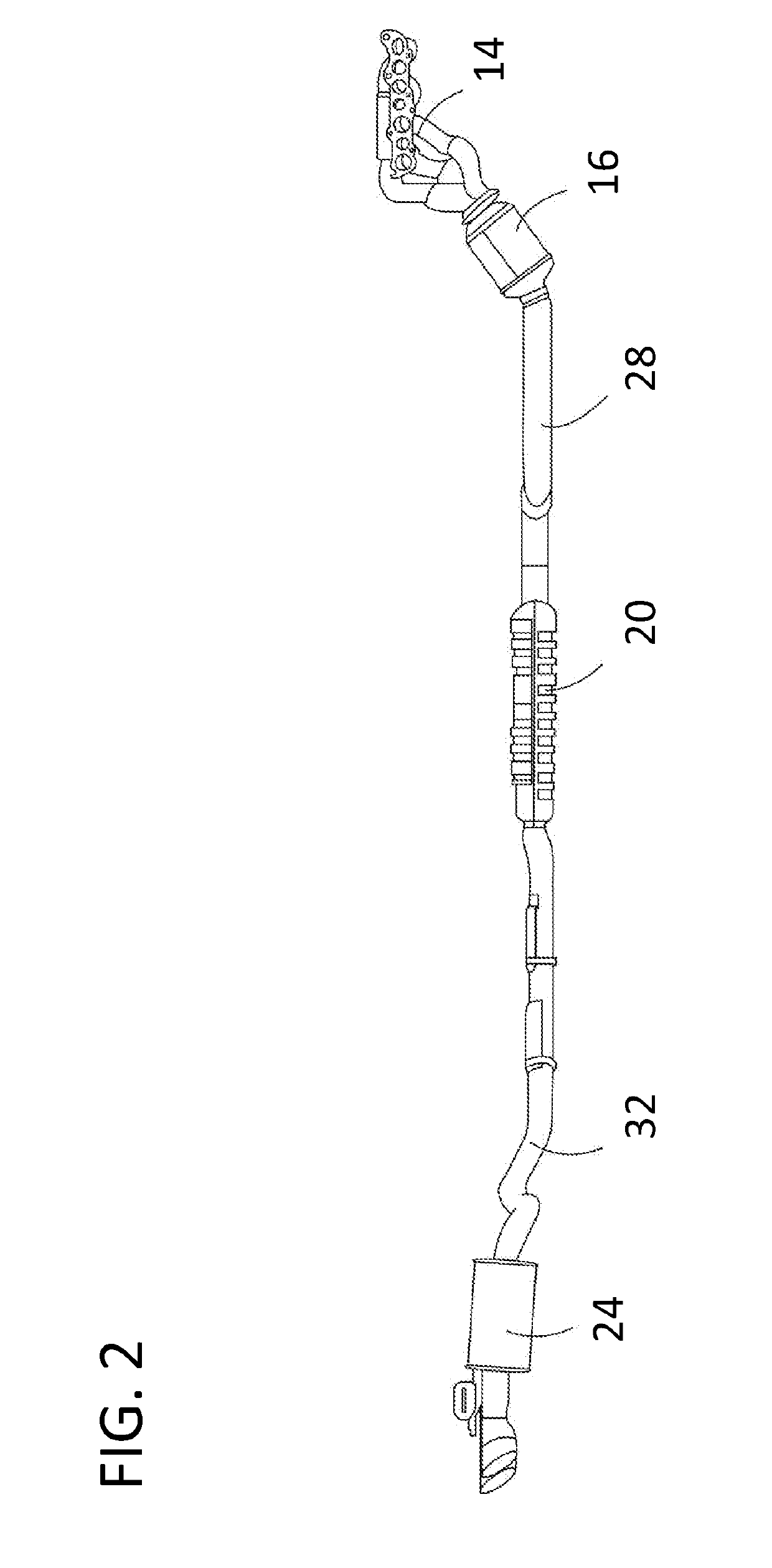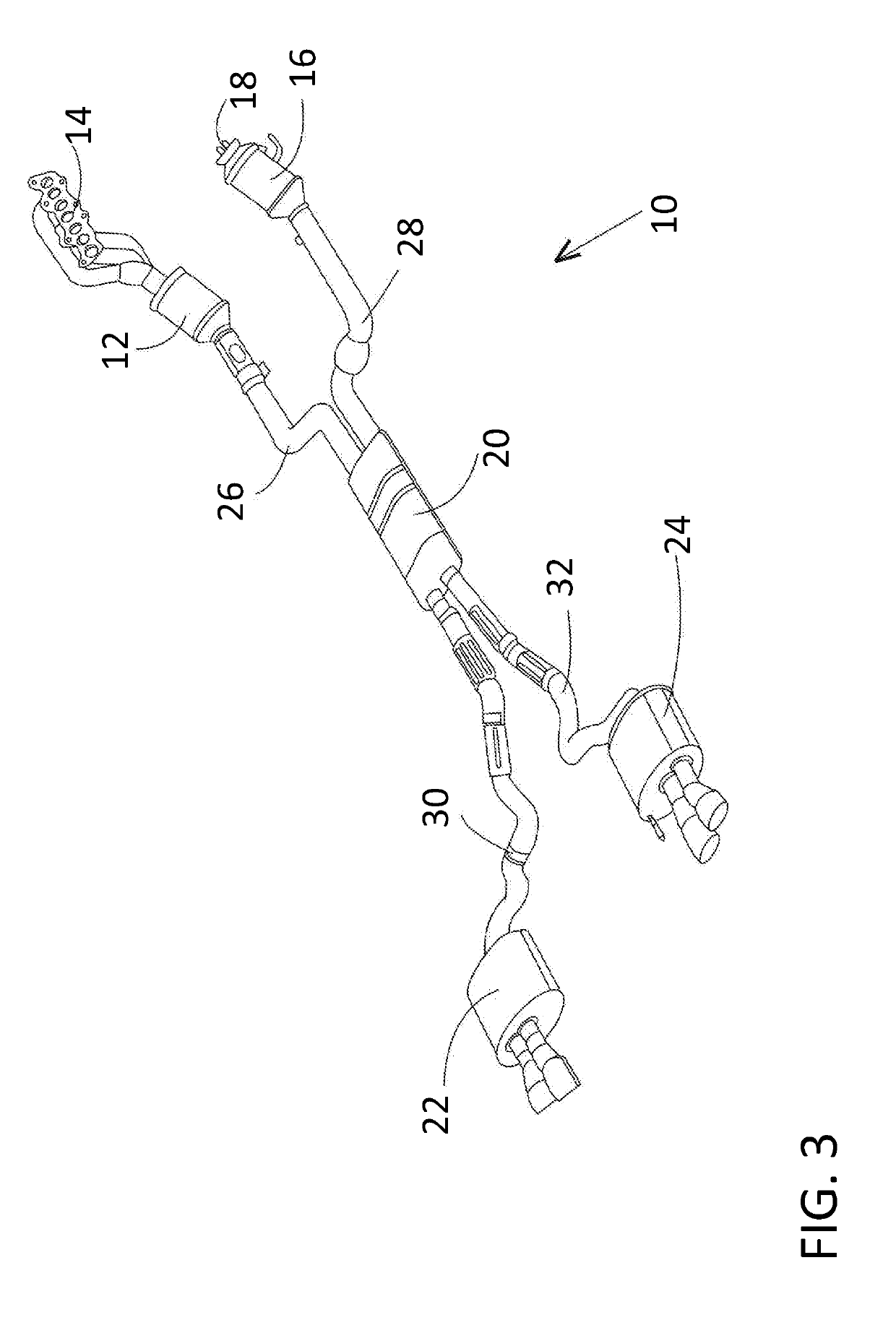Exhaust system having tunable exhaust sound
- Summary
- Abstract
- Description
- Claims
- Application Information
AI Technical Summary
Benefits of technology
Problems solved by technology
Method used
Image
Examples
Embodiment Construction
[0029]In the following figures, the same reference numerals will be used to refer to the same components. In the following description, various operating parameters and components are described for different constructed embodiments. These specific parameters and components are included as examples and are not meant to be limiting.
[0030]The accompanying figures show various related interpretations of the disclosed inventive concept which provides an exhaust system having a tunable exhaust sound which incorporates a resonator, a pair of mufflers, and pipes to connect the resonator to the catalytic converters and the resonator to the mufflers. The exhaust system of the disclosed inventive concept is intended for use with engines having a V-configuration but may be adapted for use with other types of engines. In addition, while the exhaust system of the disclosed inventive concept illustrates described versions of resonators being used with described versions of mufflers with some muffl...
PUM
 Login to View More
Login to View More Abstract
Description
Claims
Application Information
 Login to View More
Login to View More - R&D
- Intellectual Property
- Life Sciences
- Materials
- Tech Scout
- Unparalleled Data Quality
- Higher Quality Content
- 60% Fewer Hallucinations
Browse by: Latest US Patents, China's latest patents, Technical Efficacy Thesaurus, Application Domain, Technology Topic, Popular Technical Reports.
© 2025 PatSnap. All rights reserved.Legal|Privacy policy|Modern Slavery Act Transparency Statement|Sitemap|About US| Contact US: help@patsnap.com



